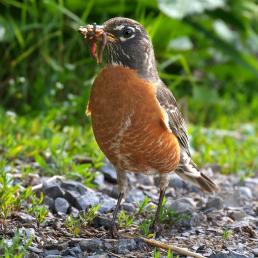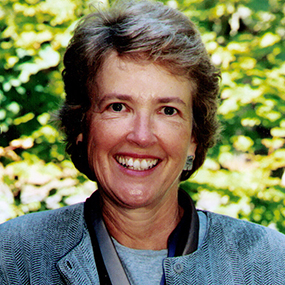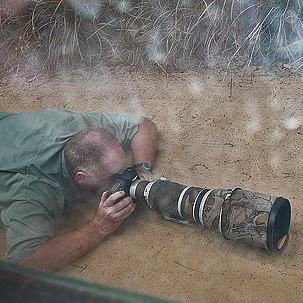

Join BirdNote tomorrow, November 30th!
Illustrator David Sibley and actor H. Jon Benjamin will face off in the bird illustration battle of the century during BirdNote's Year-end Celebration and Auction!
What does relocating Caspian Terns from an island in the Columbia River have to do with luring Short-tailed Albatrosses away from an active volcano in Japan? They both use methods of social attraction pioneered by Dr. Stephen Kress. Social attraction utilizes visual cues such as decoys and audio recordings of birdcalls. Using these, scientists can entice bird colonies out of harm’s way. These Atlantic Puffins represent another successful use of social attraction: Kress and his team established new colonies of puffins on the coast of Maine!
BirdNote®
Restoring Bird Colonies with Social Attraction
Featuring Dr. Stephen Kress
Interview by Chris and Todd Peterson
This is BirdNote.
[Din of a breeding colony of Caspian Terns]
What does relocating Caspian Terns from an island in the Columbia River have to do with luring Short-tailed Albatrosses away from an active volcano in Japan? They both use methods of social attraction pioneered by Dr. Stephen Kress of Audubon’s Project Puffin.
Social attraction involves using visual cues such as decoys and audio recordings of birdcalls. Using these, scientists can entice bird colonies out of harm’s way. And, as Kress and his team did with puffins on the coast of Maine, new colonies can be established in places where they’ve not been seen for years. [Call of Atlantic Puffin]
Dr. Kress explains:
“The applications have been remarkably diverse. Everything from saving endangered salmon, to oil spills, to ocean-level rise, to avoiding volcanic eruptions and egg poachers…Very different applications, but the principle is the same: colonial birds are unlikely to pioneer new colonies by themselves. It does happen, but it’s more likely to happen if you can jump start the process with decoys and audio recordings.”
“All this started with the idea that wouldn’t be great if we could reassemble a lost seabird colony. There’s a momentum going now. Moving seabird chicks and attracting them with decoys and sound recordings…at least 47 species in at least 14 countries I know of…where the methods are being used.”
[Din of Common Terns at a breeding colony]
For more to this story, begin at BirdNote.org.
###
Bird sounds provided by The Macaulay Library of Natural Sounds at the Cornell Lab of Ornithology, Ithaca, New York. Calls of breeding colony of Caspian Terns [179521] recorded by D. McCartt; groan of Atlantic Puffin [62361] by W.W.H. Gunn; calls of breeding colony of Common Terns [98873] by R. Grotke.
Wave ambient recorded by C. Peterson on Hog Island, Maine.
BirdNote’s theme music was composed and played by Nancy Rumbel and John Kessler.
Producer: John Kessler
Executive Producer: Chris Peterson
© 2015 Tune In to Nature.org November 2013/2017 Narrator: Mary McCann
ID# socialattraction-01-2013-11-07socialattraction-01 Zoom Disk 1 Track 5 11:38 and 12:35










